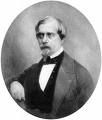









TLW's Photography Historyscope |
By T.L. Winslow (TLW), the Historyscoper™ |
© Copyright by T.L. Winslow. All Rights Reserved. |
Original Pub. Date: Oct. 5, 2015. Last Update: Apr. 15, 2019. |
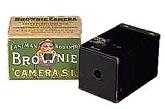
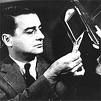
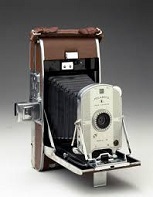
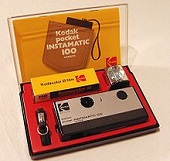
Westerners are not only known as history ignoramuses, but double dumbass history ignoramuses when it comes to Photography and photography history. Since I'm the one-and-only Historyscoper (tm), let me quickly bring you up to speed before you dive into my Master Historyscope.

In 1802 English chemist Thomas Wedgwood (1771-1805), son of Josiah Wedgwood makes the first photograph using paper coated with silver nitrate, causing his acquaintance Humphry Davy to pub. a paper on it, after which the search for a fixing agent begins - send us your pictures?

In June 1827 the first successful photograph (which he calls "heliograph") is produced by Joseph Nicephore Niepce (Nicéphore Niépce) (1765-1833) in France; it uses bitumen of Judea coated on pewter plates in a camera obscura facing a window of his estate, imaging a blurry bldg., tree, and barn after eight hours of exposure, becoming the oldest surviving photography of a real-world scene; he produced foggy photographs as early as 1822.

In 1835 English physicist William Henry Fox Talbot (1800-77) takes the earliest known negative photograph using paper coated with silver chloride in a camera obscura, Lacock Abbey, Wiltshire, and later claims to have invented photography ahead of Daguerre; he later waxes the negative, places it over another coated paper, and exposes it to sunlight to produce a positive image, becoming the first to produce multiple copies from one negative, and the first to make paper photographs ("negative positives"), which develops into modern photography, while Daguerrotypes prove to be a dead end?

In 1837 French painter Louis Jacques Mande (Mandé) Daguerre (1789-1851) invents the "miraculous" reduced exposure time Daguerreotype process of photography using a silver iodide coating on copper plates, developed with mercury fumes and washed with a salt solution to prevent darkening; he doesn't present it to the public until 1839. On Jan. 7, 1839 after partnering with Nicephore Niepce in 1829, Daguerre gives his first public demonstration of his new photographic process, and it becomes an instant hit, launching "daguerréotypomanie"; "An hour later, all the opticians' shops were seiged, but could not rake together enough instruments to satisfy the onrushing army of would-be daguerreotypists; a few days later you could see in all the squares of Paris three-legged dark-boxes planted in front of churches and palaces." (Helmut Gernsheim); on Feb. 23 the earliest report of the Daguerrotype in the U.S. appears in the Boston Daily Advertiser, which calls it a "remarkable invention"; in Sept. Robert Cornelius of Philadelphia learns the process and begins making improvements; at least two dozen men from Norway to Brazil step forward to claim precedence over Daguerre?


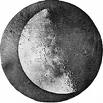

In 1839 English-born Am. scientist John William Draper (1811-82) becomes the first person in N.Y. to use the Daguerre process, and makes photographs of the Moon; a photo he makes next year of his sister Dorothy Catherine Draper becomes the oldest photographic portrait to survive to modern times; meanwhile after Louis Daguerre's invention is announced in Jan., English inventor William Henry Fox Talbot (1800-77) claims priority (1835) over Daguerre in photography and argues his case before the Royal Society.
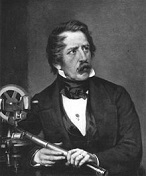
In 1839 German physicist Carl August von Steinheil (1801-70) uses silver chloride and a cardboard camera to take negative photos at the Museum of Art and the Munich Frauenkirche, taking another photo of the negatives to produce positives on 4 cm. round stock, becoming known as the Steinhell Method, the first daguerreotypes in Germany; he goes on to discover ground electicity and invent the electric clock and a method of silver-coating curved glass surfaces (with Leon Foucault).
In Jan. 1846 Welsh-born Am. immigrant civil engineer John Plumbe Jr. takes the first photo of the White House.
On Sept. 24, 1848 Charles Fontayne and William Porter take the first daguerreotype of a human in Cincinnati, Ohio?


In 1860 French photographer Nadar (Gaspard-Felix Tournachon) (1820-1910) copyrights a series of Photos of the Genitalia of a Hermaphrodite, which are later put on display at Musee D'Orsay in Paris.



On Nov. 28, 1868 French inventor Louis Arthur Ducos du Hauron (1837-1920) patents color photography; in 1872 he takes the color photo Landscape of Southern France (Angouleme) using the subractive method (yellow-cyan-magenta); meanwhile on May 7, 1869 French poet Charles Cros (1842-88) pub. Solution Generale du Probleme de la Photographie des Couleurs, an independent invention of color photography; in 1877 he invents Paleophone, which reproduces recorded sound using photoengraving, beating Thomas Edison to the punch but failing to build a working model.

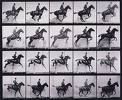
In 1872 English-born Am. landscape photographer Eadweard James Muybridge (Edward James Muggeridge) (1830-1904) using his zoopraxiscope to win a $25K bet over whether all four hooves ever leave the ground at the same time (yes); he only comes up with a single still shot this year, but shoots a galloping sequence by 1878.

On Oct. 14, 1888 French inventor ("the Father of Cinematography") Louis Aime (Aimé) Augustin Le Prince (1841-90) shoots The Roundhay Garden Scene in the garden of his father-in-law Joseph Whitley in Roundhay Leeds, West Yorkshire, England on a 2.1-in.-wide paper roll from Eastman Kodak, running 10-12 frames per sec. shot through a single-lens combi camera-projector, becoming the oldest surviving motion picture film; on Sept. 16, 1890 before he can demonstrate it in the U.S., Le Prince disappears from a train in Dijon, and Thomas Edison claims credit for the invention; in 1898 his son Adolphe Le Prince testifies in court for his father in a suit brought by Edison against the Am. Mutoscope Co., but is barred from presenting his dad's two cameras as evidence, and Edison wins, but a year later the judgment is overturned.

In 1891 French physicist Jonas ferdinand Gabriel Lippmann (1845-1921) invents the Lippmann Plate for color photography, which reproduces colors photographically based on the phenomenon of interference, with the extremely fine emulsion (0.01 micrometers) having an extremely high resolving power (400 lines/mm), winning him the 1908 Nobel Physics Prize.


On Mar. 17, 1897 (St. Patrick's Day) 30-y.-o. 183-lb. James John "Gentleman Jim" Corbett (1866-1933) loses the heavyweight boxing title by KO in the 14th round in Carson City, Nev. to 34-y.-o. 167-lb. ("Ruby Robert") ("the Freckled Wonder") ("the Cornishman") Robert James "Bob" Fitzsimmons (1863-1917) of Cornwall, England (a hard puncher), who becomes world heavyweight boxing champ #2 (until 1899), and the last British heavyweight boxing champ (until ?); William Aloysius Brady (1863-1950), mgr. of both Corbett and James J. Jeffries produces the 1.5 hour film The Corbett-Fizsimmons Fight (May 22), filmed in Veriscope (a large darkroom with the camerman inside) by Enoch Rector of Parkersburg, W. Va., becoming the longest film released to date, and the world's first feature-length film; Fizsimmons goes on to become the first prof. boxer to win the world middleweight, light heavyweight, and heavyweight boxing titles.

In 1899 Constantinople-born Amherst College-educated Gilbert Hovey Grosvenor (1875-1966) (cousin of Pres. William Howard Taft and son-in-law of Alexander Graham Bell) becomes the first full-time ed. of Nat. Geographic Mag. (until 1954), building it into a top world science and learning org., and becoming "the Father of Photojournalism".

In Feb. 1900 the $1 coardboard Kodak Brownie box camera is introduced by Eastman Kodak, featuring a simple meniscus lens that takes 2.25 in. square pictures ("snapshots") on 117 roll film, becoming a giant hit and introducing cheap photography to the masses; "You push the button, we do the rest"; named after the Palmer Cox cartoons.
In 1906 George Albert Smith (1864-1959) of England invents Kinemacolor, the first successful color motion picture process, using a 2-color additive color process that projects B&W film behind alternating red and green filters; it is used commercially until 1914.

In 1924 the 3:2 aspect ratio Leica (Leitz) Camera, developed by Oskar Barnack (1879-1936) of the Leitz Co. in Wetzlar, Hesse, Germany begins production, becoming the first mass-marketed 35mm camera (36 exposures per roll), with the motto "Small negatives - large images"; he invented it in 1913, but the war delayed production.


Everybody can own a pic of Edwin-burgh? In 1932 Am. chemist Edwin Herbert Land (1909-91) invents Polaroid Glass, the first practical synthetic light-polarizing material. On Feb. 21, 1947 Edwin Herbert Land (1909-91) publicly demonstrates his Polaroid Land Camera, which develops its own B&W photo in 60 sec.; it goes on sale next Nov. on the day after Thanksgiving at Jordan Marsh Dept. Store in Boston, Mass., launching a craze; it takes until 1962 to go color; Land retires in 1982, and the name is dropped in 1983.
On Jan. 20, 1934 Fuji Photo Film Co. Ltd. is founded by Dai-Nippon Celluloid Co. in the shadow of Mt. Fuji, Japan's highest (12,388 ft.) mountain, on Honshu Island, SW of Tokyo.

In 1935 Kodak introduces Kodachrome, the first multi-layered color film, developed by Leopold Godowsky Jr. (1900-83) (whose father Leopold Godowsky Sr. was a violinist and good friend of Albert Einstein) and Leopold Mannes (1899-1964); next spring it is introduced in 8mm movie film size, followed by 35mm size in Aug.-Sept., 1936; it is discontinued in 2009.

In Feb. 1963 the easy-loading inexpensive $16 Instamatic 50 camera is introduced by Kodak in the U.K., followed by the 100 model in Mar. in the U.S., complete with built-in flashgun for AG-1 peanut flashbulbs, becoming super popular and bringing low-cost photography to the masses, selling 50M units by 1970; in 1970 Magicube flash technology is introduced, with pyrotechnic detonators; in 1972 the Pocket Instamatic is introduced with a smaller 110 cartridge, selling 25M units; 1976 the Instamatic X is updated with the Flipflash system; the last units are sold in 1988.
In Aug. 1997 Sony introduces the $665 digital Mavica camera, which stores images on a standard PC floppy disk.
In Apr. 1998 Canon releases the Canon PowerShot Digital, a pocket-sized digital camera with good image quality, which starts a digital camera rev. and dooms film cameras.